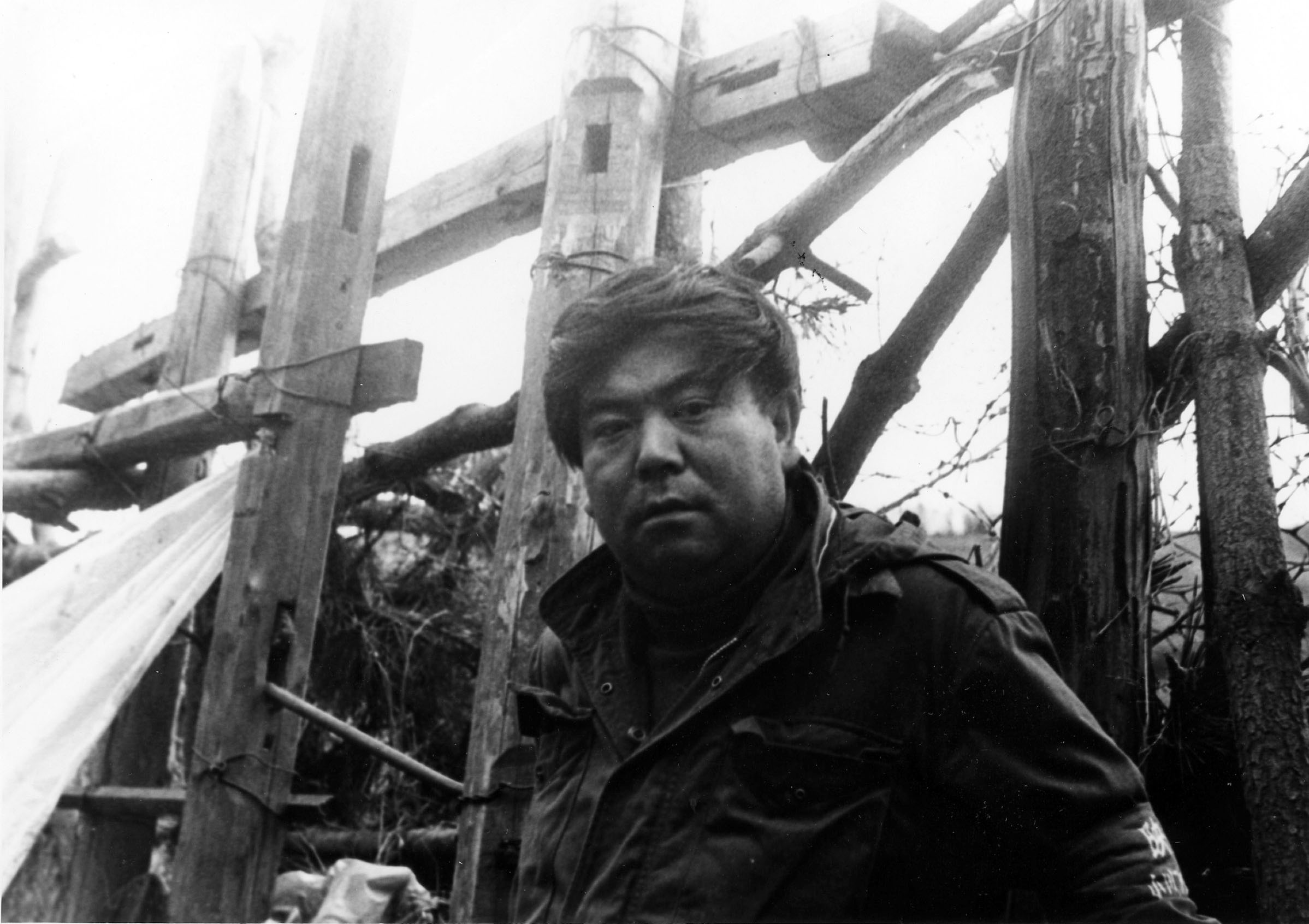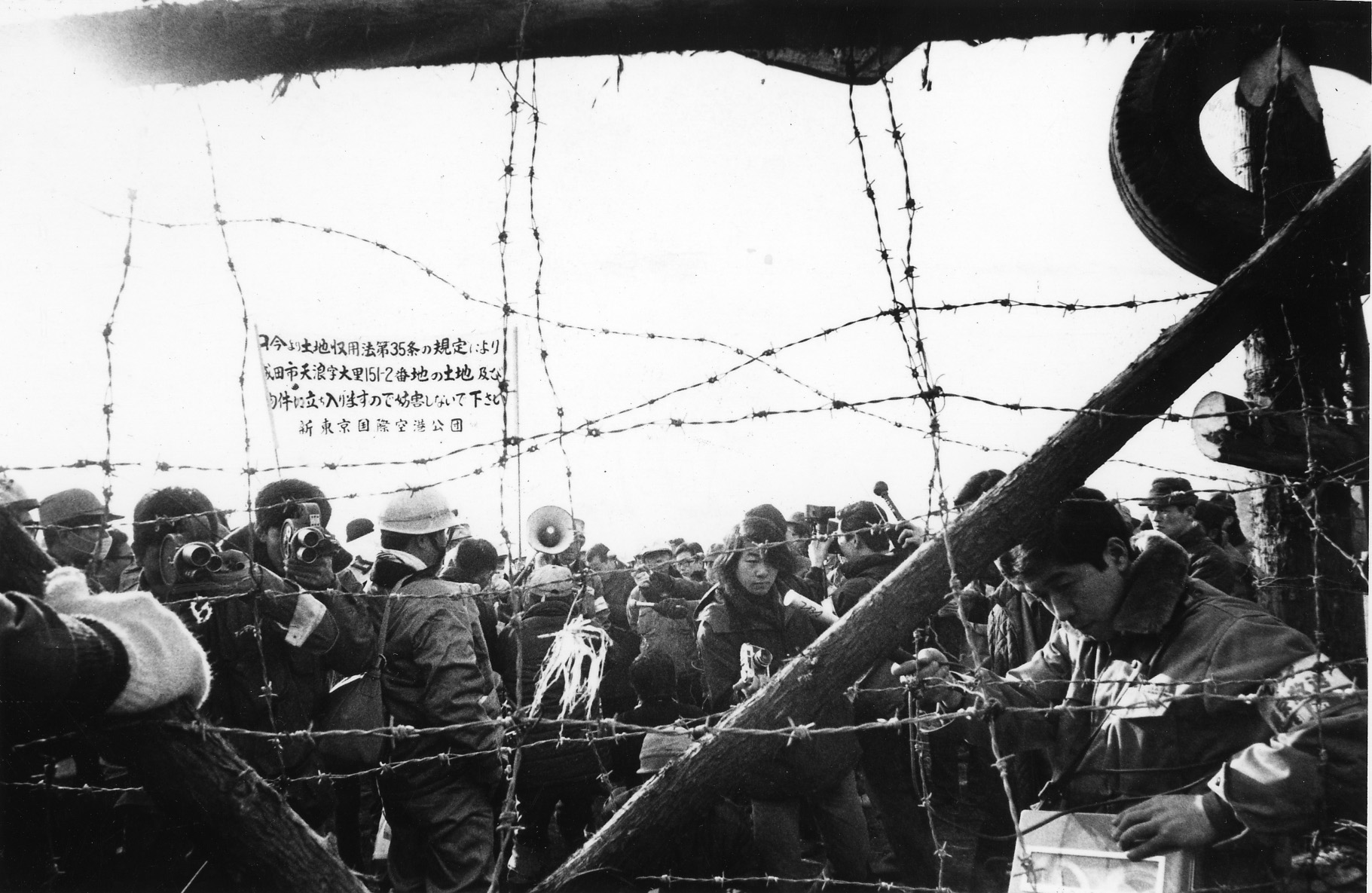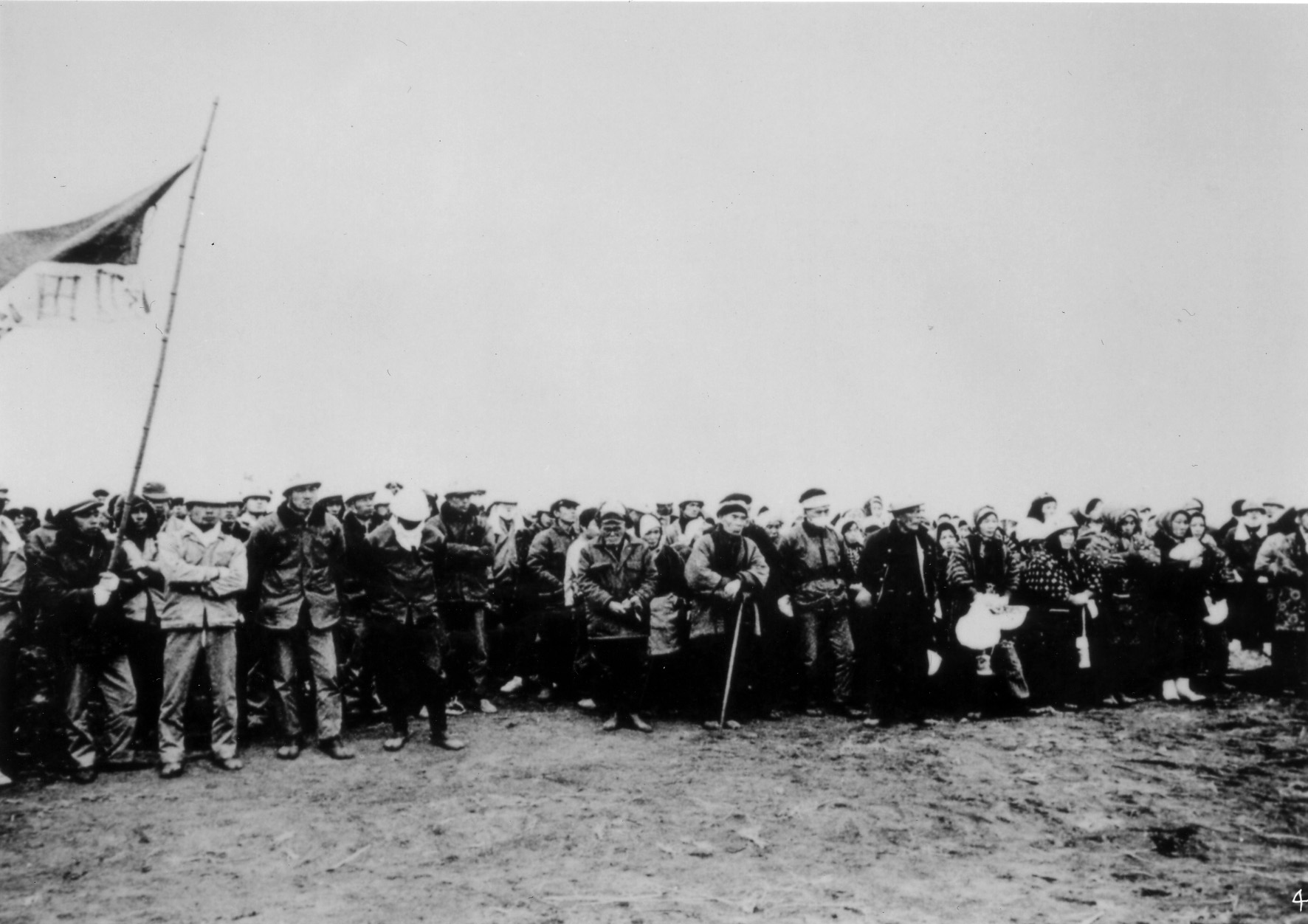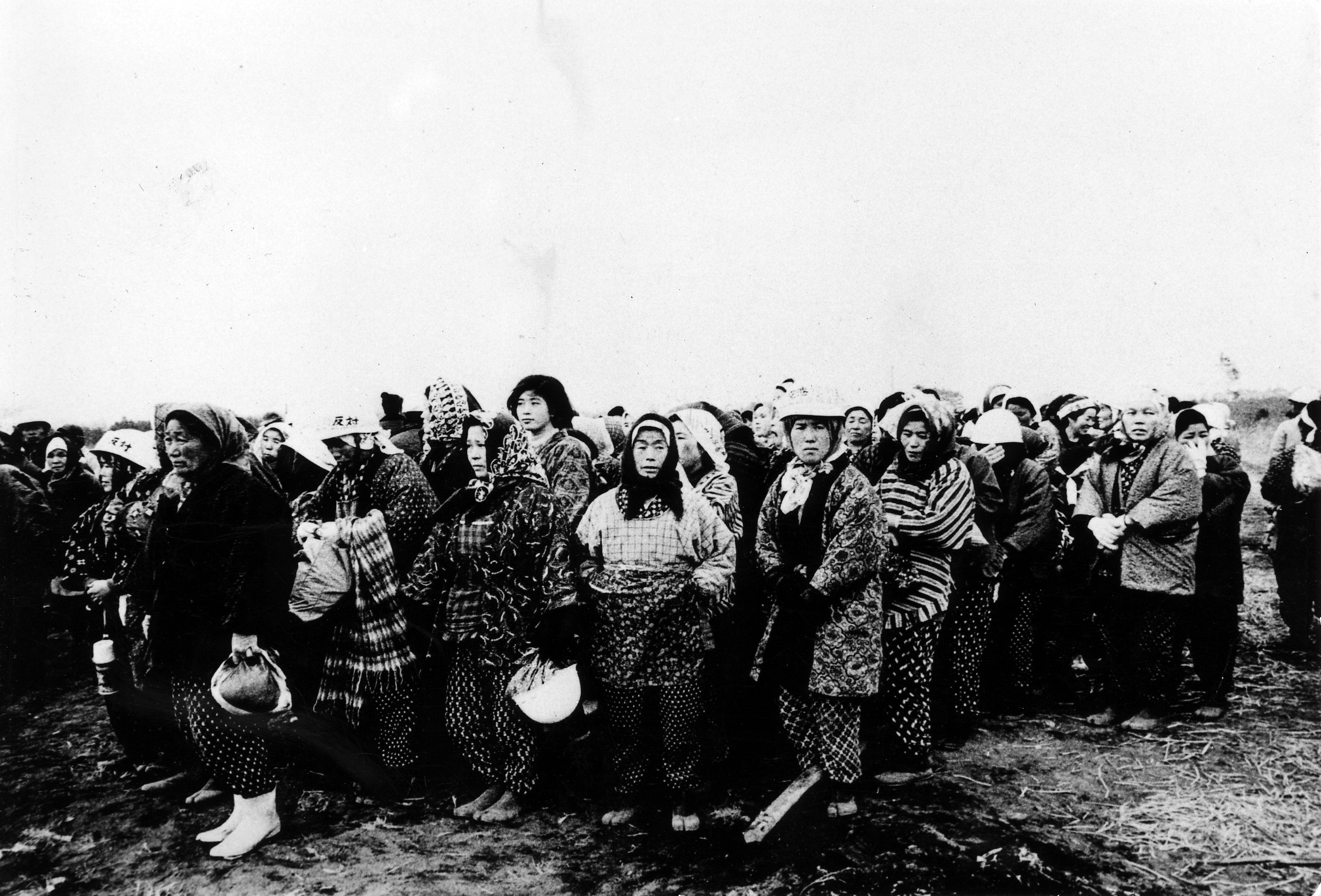Winter in Narita
OGAWA Shinsuke
- Japan
- 1970
- 143min
- 12 +
- DCP
- color
Synopsis
The second work of Sanrizuka 7. As the construction of the new airport begins, bulldozers begin to push the ground. The farmers block the way. With the police task force mobilized to disperse, the determination of the farmers is firm. In such a bitter confrontation, the relationships and communities of the farmers are turned upside down. Director Ogawa Shinsuke and his teammates gets a moment to re-establish their relationship with them.
Review
As the production of Sanrizuka series prolongs, members of the Ogawa productions settle down in Heta Village in the Sanrizuka area. Most of the Heta Villagers did not sell their lands to the airport construction and were always at the forefront of the protest. However, the stance taken by the neighboring village Komaino was different. Most of them had turned their stances to conditional, leaving room for negotiation. Winter in Narita, talks about the ongoing struggle, capturing the problems and relationships that arise from the division of long-held local communities. The first color film of Ogawa production vividly captures the regrets and concerns of the farmers having their siblings changing their stances and it also captures the scenery of shrines and communal halls that no longer function as common grounds. A farmer’s saying in the movie, “we need to create new human relationships to replace the old ones” also applies equally to Ogawa Production. If a new relationship is formed through struggles, the filmmakers are also part of the movement. Thus, this project has thrown many challenges and uneasiness to the filmmakers.
Director
-

OGAWA Shinsuke
Ogawa Shinsuke is one of the most influential Japanese documentarians after the war. His filmmaking collective, OGAWA PRODUCTION, was created in the late 1960s and produced a number of films, such as the NARITA and MAGINO VILLAGE series, which dealt with political conflicts and grassroots culture in Japan. In addition, he played a pivotal role in the establishment of the Yamagata International Documentary Film Festival.


